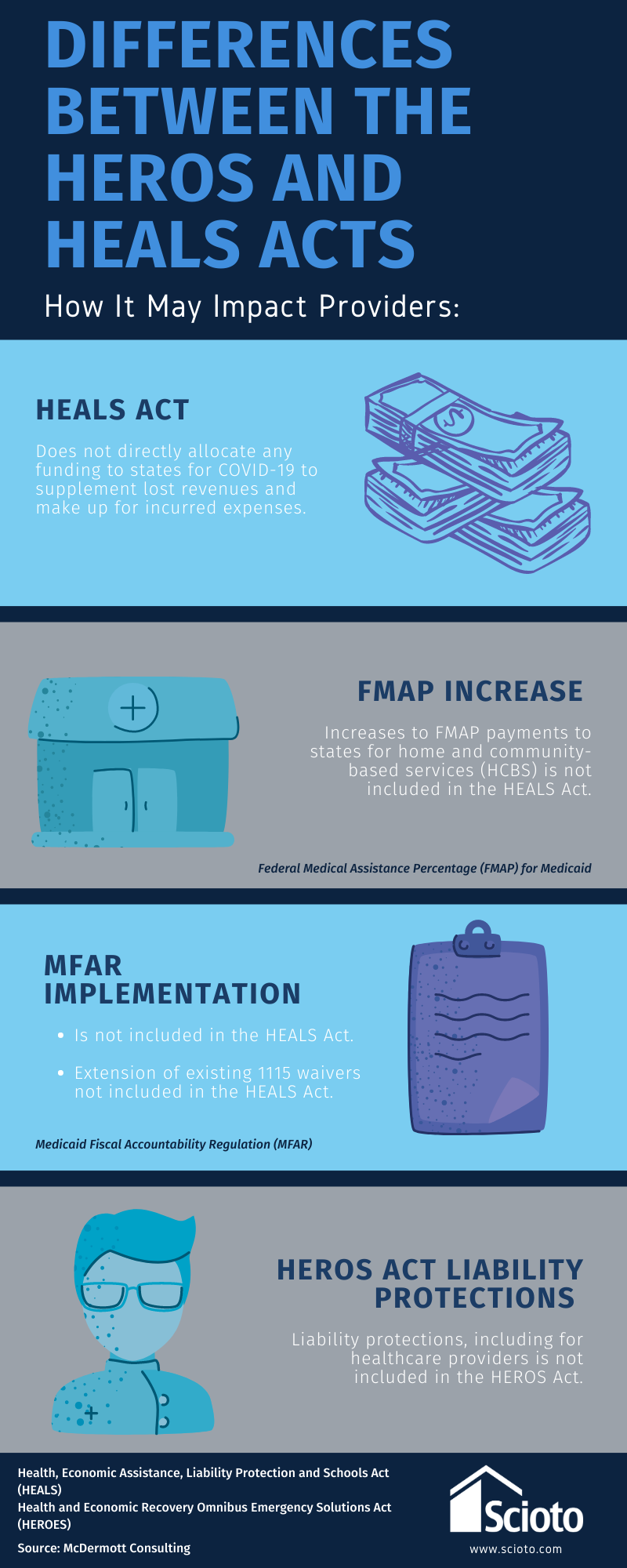On Monday, August 3, 2020, U.S. Senate Republicans unveiled the Health, Economic Assistance, Liability Protection, and Schools, or HEALS Act, three months after House Democrats introduced the Health and Economic Recovery Omnibus Emergency Solutions or HEROES Act (May 1, 2020). Understanding the key differences between the two proposals will give healthcare providers insight into why it's taking Washington leaders a long time to form a consensus on the next economic coronavirus relief package.
There are a few disparities with each Act. The costs for the HEALS Act would cost about $1 trillion, while the HEROES Act would cost about $3 trillion. They both include provisions for hazard pay for essential workers and also provide housing relief. The main differences that would impact healthcare providers are as follows:
- Unlike the HEROES Act, the HEALS Act does not directly allocate any funding to states for COVID-19 to supplement lost revenues and make up for incurred expenses.
- The Federal Medical Assistance Percentages (FMAP) increase is not included in the HEALS Act.
- Increases to FMAP payments to states for home and community-based services are not included in the HEALS Act.
- Extension of existing 1115 waivers is not included in the HEALS Act.
- Medicaid Fiscal Accountability Regulation (MFAR) implementation delay is not included in the HEALS Act.
- Liability protections, including for healthcare providers, is not included in the HEROES Act.
- Telehealth provisions are not included in the HEROES Act.

Comment